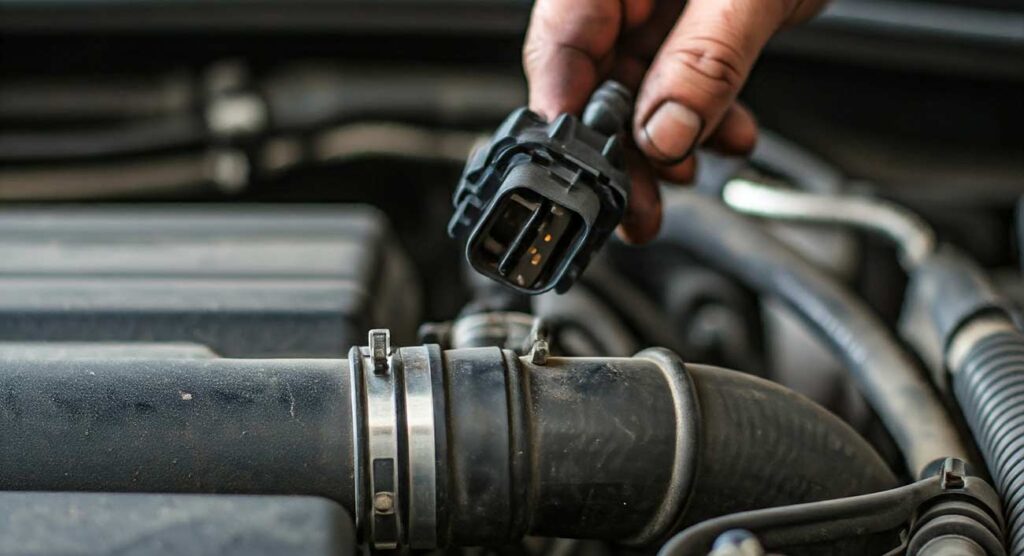Your coolant temperature sensor plays a vital role in keeping your engine running smoothly. If it goes bad, you might face serious issues with your vehicle’s performance. But how do you know when it’s time to replace it? Ignoring the signs could lead to costly repairs.
What Does a Coolant Temperature Sensor Do?
The coolant temperature sensor (CTS) measures the temperature of the engine’s coolant. It sends this data to the engine control unit (ECU), which uses it to adjust the fuel-to-air ratio and ignition timing. When this sensor fails, it can cause the engine to behave unpredictably, affecting fuel efficiency and performance. This small part has a significant impact on your vehicle’s health.
Warning Signs Your Coolant Temperature Sensor Might Be Failing
Paying attention to how your car behaves can give you clues about a failing coolant temperature sensor. Here are some of the common symptoms:
1. Poor Fuel Economy
One of the earliest signs that your coolant temperature sensor might be failing is a sudden drop in fuel efficiency. When the sensor isn’t working properly, it can send inaccurate temperature data to the ECU. This may lead to a rich fuel mixture, where the engine consumes more fuel than necessary. If you’ve noticed a drop in gas mileage, the CTS might be responsible.
2. Overheating Engine
A malfunctioning coolant temperature sensor can prevent the cooling fan from activating at the right time. If the fan doesn’t kick in, the engine can overheat. A bad sensor might also fail to alert you to a rising engine temperature, leaving you unaware that the engine is running too hot.
3. Rough Idle or Stalling
You may experience a rough idle or even stalling if the coolant temperature sensor is faulty. The ECU depends on accurate temperature readings to adjust the air-fuel mixture. A faulty sensor could make the engine run either too rich or too lean, which might cause stalling when the car is at rest. If you’ve noticed your car stalling at red lights or stop signs, the sensor might be the culprit.
4. Black Smoke from Exhaust
This is a clear sign that your engine is running rich, meaning too much fuel and not enough air is getting into the combustion chamber. Black smoke often indicates incomplete combustion, which is sometimes caused by a faulty coolant temperature sensor. When the sensor sends the wrong temperature reading to the ECU, the fuel mixture is improperly balanced.
5. Difficulty Starting the Engine
If your car struggles to start, especially in cold weather, the coolant temperature sensor might be at fault. The sensor tells the ECU how much fuel the engine needs when starting. A faulty sensor can throw off the balance, making it harder for the engine to fire up.
Many drivers report this issue worsening during winter months. Drivers in colder climates often experience more noticeable symptoms of CTS failure, especially when starting their vehicles after long periods of inactivity.
How to Diagnose a Faulty Coolant Temperature Sensor
Diagnosing a faulty coolant temperature sensor isn’t as complicated as you might think. You can check for trouble codes using an OBD-II scanner, which will tell you if there’s a sensor issue. Look for codes like P0115, P0116, or P0117, which are specific to coolant temperature sensor problems.
If you’re not comfortable using a scanner, a professional mechanic can run diagnostics for you. Many auto parts stores offer free check engine light scans that may help identify the issue.
Also, you can measure the resistance of the coolant temperature sensor with a multimeter. The resistance should decrease as the engine warms up. If the readings are inconsistent or don’t match the specifications in your vehicle’s manual, the sensor is likely bad.
Final Thoughts
Recognizing the symptoms of a failing coolant temperature sensor can save you a lot of hassle and money. If you’re experiencing rough idling, poor fuel efficiency, or difficulty starting your car, it’s a good idea to have your sensor checked. Early detection can help avoid more severe problems down the road, like engine overheating or a failed emissions test.
In the end, regular vehicle maintenance is key. Keeping an eye on your coolant temperature sensor will ensure that your car runs smoothly for years to come.

